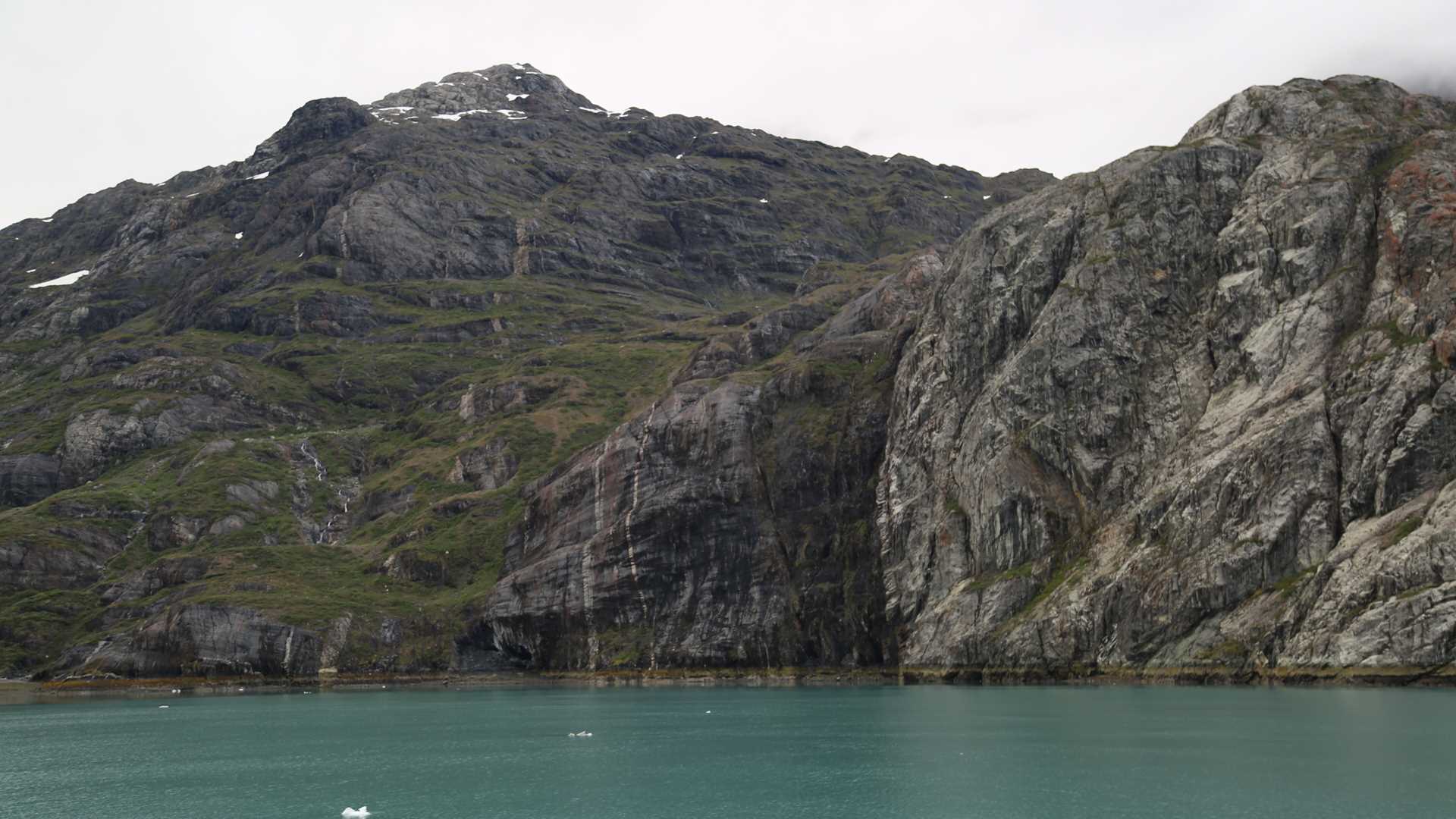Glacier Bay National Park is always a highlight on an expedition voyage in Southeast Alaska. As we sailed northward up Glacier Bay from Icy Strait in the early morning hours, guests aboard National Geographic Venture were provided with stunning views of the tributary glaciers, mountains, marine life, and rocky landforms that define the amazing scenery of Glacier Bay. After passing Reid Glacier clinging to the mountain on the port side of the ship, we sailed into Johns Hopkins Inlet for a quick view of Johns Hopkins Glacier at Jaw Point. We returned to Lamplugh Glacier and continued northward into Tarr Inlet at the far north end of Glacier Bay. While in Johns Hopkins Inlet, we saw an exceptionally sharp and well-exposed fault within what geologists call the Tarr Inlet suture zone, a broad zone of highly deformed rocks marking the contact between Paleozoic rocks of the Alexander terrane (to the east) and Cretaceous rocks of the Chugach terrane (to the west). These “accreted exotic terranes” form the bedrock foundation of this part of Southeast Alaska.
Returning to the active glaciers, Reid and Lamplugh Glaciers flow into Glacier Bay from the high Brady Icefield that caps the southeast end of the Fairweather Range. Johns Hopkins Glacier is fed by several tributary glaciers that flow from the high peaks along the crest of the Fairweather Range farther to the north. At the north end of Tarr Inlet, Margerie Glacier greeted us with spectacular calving in the bright morning sunlight. The debris-covered terminus (recessional moraine) of Grand Pacific Glacier – one of the main “trunk” glaciers that once filled all of Glacier Bay 200 years ago – spanned the end of Tarr Inlet, just beyond Margerie. Margerie Glacier, a classic tidewater glacier, was highly active with her usual loud cracks and booms, signaling the movement of ice from within the glacier.
As we headed back down Tarr Inlet and around the north end of Russell Island, we were treated to a spectacular view of a gray wolf with her black pup along the shoreline, as well as a large brown bear. The wolf was very aggressive towards the bear, probably trying to scare the bear away from her pup, and we watched this dramatic wolf-bear encounter for almost an hour. The wolf and bear took turns chasing one another near the shoreline. For many aboard National Geographic Venture, this was the most dramatic and awesome display of “wild nature” ever seen! Later in the afternoon, humpback and killer whales put on a display. They were a distance from the ship but well within binocular viewing range. Abundant puffins and sea lions were also seen at South Marble Island. Our sightings were followed by recaps in the forward lounge and then dinner. This was a day that everyone will remember forever! Glacier Bay is a sacred part of our planet that needs protection and preservation for all time.







